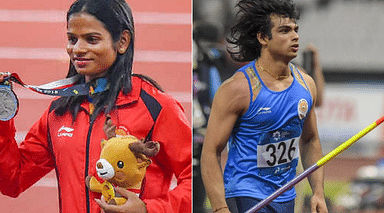About 100 years ago, Paris had originally organized the Olympics for the first time, with the track events being one of the highlights. While not much has changed about it in terms of popularity, other aspects of the race have witnessed some transformations.
These races now have better facilities, a change in equipment, a shift in the training approach, and a lot more new elements. But have all of these changes enabled athletes to perform better in terms of speed and endurance?
A viral explainer video posted by ‘Outperform’ compared the 100m event between 1924 and 2024, listing down all the changes that have occurred since then. Amongst these, they addressed how innovation played a crucial role in overcoming challenges.
This meant that a lot of processes with regard to preparing for a 100m sprint witnessed optimization. From a change in the structure of the shoe to a shift in the build of tracks, the feel for sprinting has changed.
This has definitely given athletes an edge over their ancestors when it comes to pacing through the 100m under record time.
View this post on Instagram
Shoes have gone from being made out of goatskin leather with wrought iron spikes to textile and foam with carbon and nylon outsole, making them breathable and durable.
Tracks have also gone from being formed out of ash, clay, and rock to a unique material called ‘Mondo’ – i.e. a prefabricated vulcanized rubber, which helps maximize speed.
Sprint block starts have changed from the rudimentary technique of hand-dug holes in the mud to precision blocks. This has given athletes a better chance at a strong start to their race, thus improving their performance.
Even athletic training for sprinting has changed, making it more scientific, logical, and customized for every athlete. Apart from all these changes, sports have witnessed a shift in the approach towards participating in such events.
Preparation for a grand event like the Olympics now includes focus on an athlete’s sleep pattern, dietary needs, recovery from injuries, comfortable apparel for allowing proper movement, and more.
Strategies have upgraded along with coaches’ experience and have led to improvement in data collection and analysis of one’s performance.
So if one were to compare the best sprint timings of the 1924 gold medalist Harold Abrahams versus the current gold medalist Noah Lyles, there has been a shift.
Abrahams wrapped up his 100m sprint in 10.6s, while Lyles won with a stunning 9.79s. There is a noteworthy 0.81-second difference, showcasing how advancements in various factors influencing one’s sprint can have a significant impact.



